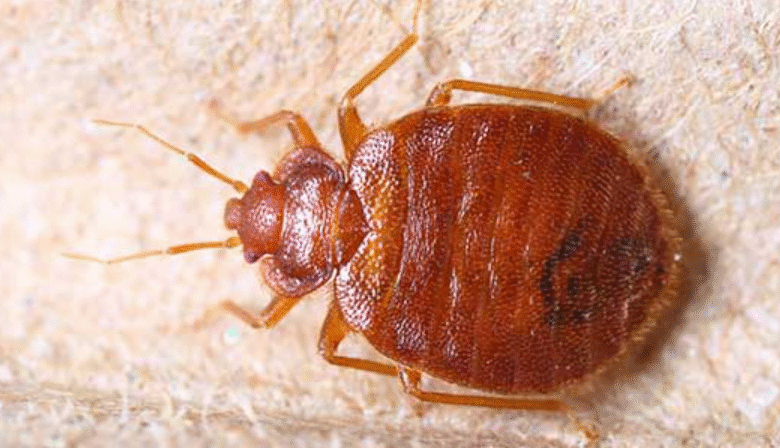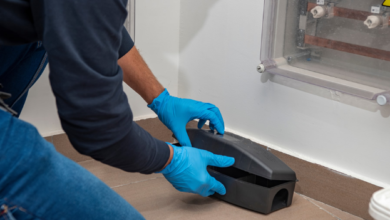Say Goodbye to Bedbugs: Proven Control Methods

Bedbugs are tiny, blood-sucking pests that can turn your peaceful nights into a nightmare. These resilient insects hide in mattresses, furniture, and even electrical outlets, making them difficult to eliminate. If you’ve ever experienced a bedbug infestation, you know how frustrating and stressful it can be.
The good news is that with the right strategies, you can effectively get rid of bedbugs and prevent future infestations. In this article, we’ll explore proven control methods—from DIY solutions to professional treatments—to help you reclaim your home.
Understanding Bedbugs
Before tackling an infestation, it’s important to understand what bedbugs are and how they operate.
- Appearance: Bedbugs are small, flat, reddish-brown insects about the size of an apple seed.
- Behavior: They feed on human blood, usually at night, leaving itchy, red bites.
- Hiding Spots: They hide in mattresses, bed frames, carpets, furniture, and even behind wallpaper.
- Reproduction: A single female can lay hundreds of eggs, leading to rapid infestation.
Knowing these facts helps in identifying and eliminating them effectively.
Signs of a Bedbug Infestation
Detecting bedbugs control ( bekæmpelse af væggelus ) early can prevent a full-blown infestation. Look for these signs:
- Bite Marks: Small, red, itchy welts in a line or cluster (often on arms, legs, or back).
- Blood Stains: Tiny blood spots on sheets or pillowcases from crushed bugs.
- Dark Spots: Bedbug droppings (small black or brown stains) on mattresses and furniture.
- Eggs & Shells: Tiny white eggs or shed skins in crevices.
- Musty Odor: A sweet, musty smell from their scent glands in severe infestations.
If you notice any of these signs, take immediate action.
See also: Future Trends in Investment Management 3249983774
Proven Bedbug Control Methods
1. Heat Treatment
Bedbugs cannot survive extreme heat. Methods include:
- Steam Cleaning: Use a high-temperature steamer on mattresses, carpets, and furniture.
- Hot Wash & Dry: Wash infested bedding and clothes at 60°C (140°F) and dry on high heat.
- Professional Heat Treatment: Pest control experts use industrial heaters to raise room temperatures to lethal levels (50°C/122°F or higher).
2. Cold Treatment
While less effective than heat, freezing can kill bedbugs if done correctly:
- Place infested items in a sealed bag and freeze at -18°C (0°F) for at least four days.
- Portable cryonite freezing machines are used by professionals for targeted treatment.
3. Vacuuming & Deep Cleaning
- Use a vacuum with a HEPA filter to remove live bugs, eggs, and droppings.
- Focus on seams, cracks, and crevices where bedbugs hide.
- Dispose of the vacuum bag in a sealed plastic bag immediately.
4. Mattress & Furniture Encasements
- Special bedbug-proof covers trap existing bugs and prevent new ones from entering.
- Leave encasements on for at least a year to ensure all bugs die.
5. Diatomaceous Earth (DE)
- A natural, non-toxic powder that dehydrates and kills bedbugs.
- Sprinkle DE around bed legs, baseboards, and infested areas.
- Reapply as needed and use food-grade DE for safety.
6. Chemical Treatments
- Insecticides: Use EPA-approved bedbug sprays (e.g., pyrethroids, neonicotinoids).
- Desiccants: Silica gel-based products destroy the bugs’ protective outer layer.
- Professional Pest Control: Exterminators use stronger chemicals and follow-up treatments for complete eradication. For more read https://vaeggelus-fri.dk/
7. Natural Remedies
For those who prefer non-chemical solutions:
- Essential Oils: Tea tree, lavender, and peppermint oils repel bedbugs (mix with water and spray).
- Baking Soda & Salt: A mixture can dehydrate and kill bedbugs over time.
Preventing Future Infestations
Once you’ve eliminated bedbugs, follow these steps to keep them from returning:
- Inspect Secondhand Items: Check used furniture, mattresses, and clothing before bringing them home.
- Reduce Clutter: Fewer hiding spots make it harder for bedbugs to thrive.
- Regular Cleaning: Vacuum frequently and wash bedding in hot water.
- Travel Precautions: Inspect hotel rooms and keep luggage off the floor. Wash clothes immediately after returning.
- Seal Cracks & Gaps: Use caulk to close entry points in walls and furniture.
When to Call a Professional
While DIY methods can work for small infestations, severe cases often require professional help. Consider hiring an exterminator if:
- The infestation spreads to multiple rooms.
- Home treatments fail after several attempts.
- You experience recurring bites despite cleaning efforts.
Pest control experts have access to stronger treatments and can ensure complete eradication.
Final Thoughts
Bedbugs are tough pests, but with persistence and the right techniques, you can eliminate them for good. Whether you choose heat treatment, chemical sprays, or natural remedies, consistency is key. Prevention is equally important—staying vigilant can save you from future infestations.

